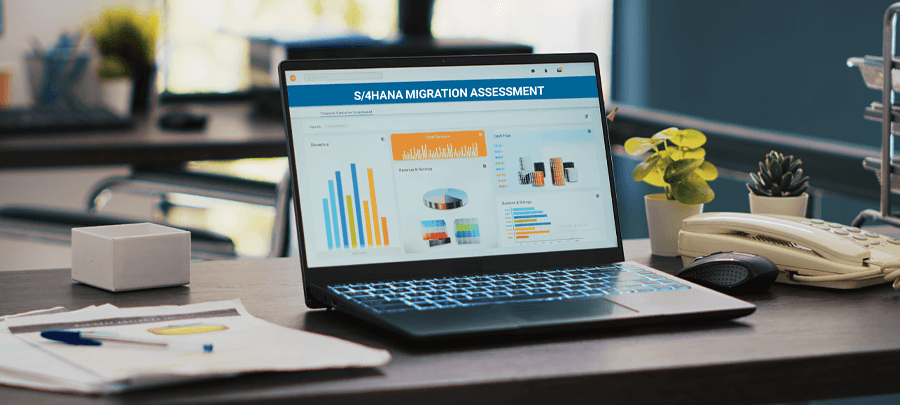Runway Approach: Revolutionizing Your S/4HANA Journey
21 November 2024


Norb Brumbergs
Senior Vice President - SAP DeliveryNorb Brumbergs is Vice President, SAP Delivery at Applexus. He is a senior Information Technology and Program Management executive with over 30 years of management expertise....
Every organization is unique and has its own set of business objectives and requirements that it aims to achieve while migrating from SAP ECC to S/4HANA. Traditionally, they have relied on the Brownfield or Greenfield approaches, each with its own set of benefits and limitations. The Brownfield approach involves upgrading the existing system and offers business continuity by preserving historical data and processes, reducing disruption and the overall cost involved. However, it may inherit outdated customizations and technical debt, potentially limiting optimization opportunities. The Greenfield approach allows for a complete redesign, eliminating old customizations and aligning with modern standards. Yet, it involves starting from scratch, which can be costly and time-consuming and may disrupt ongoing operations. Both approaches deliver solutions in their specific way.
But what if there were more options available beyond these conventional methods? What if organizations could have the best of both worlds by exploring hybrid and more tailored approaches that better align with their migration strategies and unique requirements?
Applexus's RunWay Approach
Applexus's RunWay Approach provides a diverse array of migration options to SAP S/4HANA, addressing the unique needs of organizations. Beyond traditional methods like Brownfield and Greenfield, it introduces an innovative "Selective Transition" approach, incorporating tailored migration options such as Carve-Out, Consolidate, and Hybrid. This Selective Transition approach is powered by CeleRITE, our AI-driven platform designed for comprehensive S/4HANA migrations.
Additionally, the RunWay Approach features advanced variations of the Brownfield method—JumpStart and Clean & Start—as well as Greenfield options—Fit to Business and Fit to Standard. This ensures a holistic and efficient migration process, enabling organizations to choose the best path forward based on their specific requirements. Let’s look at the 7 distinct approaches to S/4HANA enabled by the Applexus RunWay approach powered by CeleRITE.

JumpStart
The JumpStart approach, a variant of the Brownfield method, focuses on converting to S/4HANA first, followed by simplification of the S/4HANA system at a later stage. This method is particularly suitable for organizations with extensive customizations in their ECC systems, those seeking quick implementation, or companies needing to preserve historical data. The main goal is to ensure a smooth transition to S/4HANA with minimal disruption while keeping all your important data intact.
Clean & Start
The Clean & Start option, another variant of the Brownfield approach, emphasizes simplifying the ECC system before converting to S/4HANA. It is ideal for organizations with complex legacy systems that are struggling with data quality and integration issues. By addressing inefficiencies, optimizing custom code, and improving data quality in the ECC environment, this approach facilitates a smoother transition to S/4HANA, ensuring that key business processes remain intact during migration.
Carve-Out
The Carve-Out method involves extracting and migrating specific business units or functions or organizational elements from ECC to S/4HANA. This approach is particularly advantageous for organizations looking to transition select areas to S/4HANA, especially during divestitures. Another ideal situation could be for companies looking to pilot S/4HANA for one of their functions, say finance, before deciding to migrate the rest of the functions. Carving out a system can be extremely challenging, but tools like CeleRITE make it much easier by speeding up the process with its smart features, identifying and migrating all the needed configurations, custom code, data, and user roles and authorizations.
Consolidate
The Consolidate method centers on selectively migrating from ECC to an existing S/4HANA environment. This approach is ideal for organizations with multiple SAP versions due to mergers, acquisitions, or global operations. It involves analyzing existing systems to identify overlaps and merging them into a single S/4HANA instance, which includes data harmonization, custom code adjustments, and integration setup, thereby streamlining operations and reducing complexity.
Hybrid
The Hybrid approach combines selective migration of specific processes from ECC to S/4HANA while redesigning others from scratch. This method is suited for organizations aiming to minimize costly investments in rebuilding existing customizations that are already working in S/4, as well as cleaning up the non-functional configurations, blending brownfield and greenfield strategies. For example, a company may decide to retain its effective finance processes while completely revamping its procurement processes to introduce new capabilities. This flexibility of Hybrid approach allows businesses to maintain their strengths while innovating where necessary, making it a popular choice for effective migration. Here as well, Tools like CeleRITE act as the essential bridge that empowers organizations to transition seamlessly to S/4HANA while preserving what works and innovating where it matters the most.
Fit to Business
The Fit to Business Greenfield approach involves establishing a new S/4HANA system and redesigning business processes to align with SAP's best practices while selectively incorporating essential customizations from ECC. This approach is ideal for organizations seeking a comprehensive overhaul while retaining critical functionalities. The process includes analyzing existing inefficiencies, creating a new system blueprint, transferring necessary customizations, and rigorously testing the new system before going live. By minimizing unnecessary customizations, this approach ensures the system remains agile and easier to maintain.
Fit to Standard
The Fit to Standard method, a variant of the Greenfield approach, focuses on establishing a new S/4HANA system from scratch according to SAP’s best practices. This approach is ideal for organizations seeking a clean start and wanting to leverage SAP’s ongoing innovations. It emphasizes maintaining a clean core by minimizing custom code, which facilitates easier future upgrades and ensures that the system can evolve alongside SAP’s latest features and functionalities. The process includes evaluating existing processes, aligning them with SAP best practices, and designing a streamlined system that maximizes the benefits of SAP’s offerings.
What happens post migration?
After successfully going live on S/4HANA, focus now shifts to optimizing system performance, enhancing user experience, and maximizing the value of SAP investments. Key activities include fine-tuning business processes through customization and regular reviews, optimizing performance via monitoring and adjustments. Code optimization is essential, focusing on removing unused code and monitoring for performance issues with the CeleRITE Code Transformation Studio. Data management involves ensuring data quality, archiving, and leveraging S/4HANA’s advanced analytics. Access control is refined through audits and the management of user roles using CeleRITE Access Control.
Furthermore, continuous monitoring of system integrations and infrastructure is crucial for maintaining stability, scalability, and robust error handling. CeleRITE’s comprehensive approach ensures that your S/4HANA solution remains innovative and operates at peak performance, empowering your organization to fully leverage its SAP investment and achieve strategic objectives.
Ready to Transform Your Migration Journey?
Migrating to S/4HANA is a pivotal move for your organization, and traditional methods may not cover all complexities. With the Applexus Runway approach, you get seven distinct options to choose from, each potentially the perfect fit for your business needs. Now, how do you identify the best path forward for your organization? We have developed a comprehensive S/4HANA assessment leveraging CeleRITE, to guide you in selecting the most suitable migration strategy. Stay tuned for our upcoming blog, where we’ll delve deeper into how this Assessment works and how you can make an informed decision to set your organization on the path to success!












